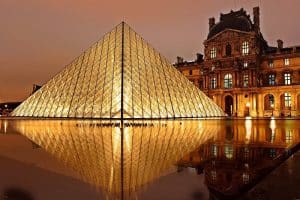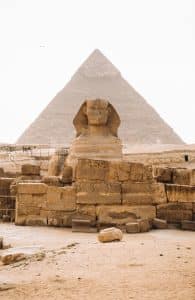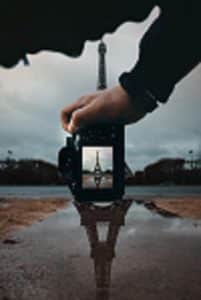Introduction
In an age defined by technological innovation and connectivity, the world’s most cherished cultural icons are no longer confined by geographical boundaries. The advent of virtual tours has ushered in a new era of exploration, one where the barriers of distance and travel are dismantled, and the marvels of human history are accessible to anyone with an internet connection. “Breaking Down Borders: Global Access to Cultural Icons” encapsulates the transformative power of virtual tours, providing a window into the heart of landmarks and monuments that have shaped civilizations across the globe.
Breaking Down Borders: Global Access to Cultural Icons
Long gone are the days when visiting an iconic landmark required extensive planning, costly flights, and time-consuming logistics. With virtual tours, the world’s most renowned cultural sites are just a few clicks away. Whether it’s gazing at the intricate details of the Taj Mahal’s marble façade (https://www.airpano.com/360photo/taj-mahal-india/ virtual tour of the Taj Mahal) , strolling through the grand halls of the Louvre, or standing in awe before the pyramids of Giza, virtual tours grant users the ability to embark on a journey of discovery from the comfort of their own homes. Virtual tours know no borders, allowing armchair travelers to experience the wonders of our world in ways that were once inconceivable. Here is a list of the top ten virtual tours according to the guardian. https://www.theguardian.com/travel/2020/mar/30/10-best-virtual-tour-worlds-most-famous-landmarks

The Louvre in Paris, France lit up at night. One of the most famous museums housing the infamous Mona Lisa.
The power of virtual tours extends beyond mere observation. It allows users to take control of their journey, to navigate through the intricate details of each landmark, and to choose their own narrative path. The virtual tour transforms a passive viewing experience into an active and engaging exploration. By zooming in on architectural intricacies, lingering in historic courtyards, and gazing up at towering monuments, users can appreciate the grandeur and artistry that define these cultural icons. Through virtual tours, landmarks become more than static structures; they become dynamic stories waiting to be told. We can see how dynamic they are through the following Youtube video, https://www.youtube.com/watch?v=bwKhyXWsOLc

The Taj Mahal, representing some of the finest architecture, is found in Agra, India
Virtual tours don’t just provide access; they facilitate an intimate connection to cultures and peoples across the world. As individuals from various corners of the globe step into the virtual shoes of others, they gain insights into different ways of life, histories, and traditions. This newfound understanding fosters cross-cultural empathy and appreciation, bridging the gap between diverse societies. It’s a digital form of cultural exchange that extends far beyond travel brochures or textbooks, offering a firsthand experience that’s as enlightening as it is enriching. If you are wondering where to start we have created a “bucket list” for you, https://www.momentumvirtualtours.com/blog/the-worlds-best-virtual-tours/
In the realm of virtual tours, the boundaries that once confined the exploration of cultural icons are replaced by a borderless, interconnected world of discovery. As technology continues to evolve, this medium of exploration stands as a testament to humanity’s collective desire to understand and appreciate the tapestry of civilizations that have shaped our past, present, and future. “Breaking Down Borders: Global Access to Cultural Icons” celebrates not only the marvels of human achievement but also the potential of technology to unite us all in our shared pursuit of knowledge and wonder.
Digital Time Travel: Exploring History in 360 Degrees
While physically journeying back in time remains a fantasy, the digital era has gifted us with a remarkable alternative: the ability to virtually traverse the annals of history through immersive 360-degree experiences.
The magic of virtual time travel begins with the meticulous process of capturing historical landmarks and sites in astonishing detail. Cutting-edge cameras and imaging technologies combine to create high-resolution 360-degree images, effectively freezing moments in time. This digitization of physical spaces not only captures architectural grandeur but also preserves the nuanced textures, colors, and patinas that tell the stories of bygone eras. From the weathered stones of medieval castles to the faded frescoes of ancient temples, every pixel becomes a fragment of history, waiting to be explored. If you are interested in the more historic virtual tours, https://lazyhistorian.com/20-virtual-tours-of-historical-sites-you-can-visit-from-home/.
The allure of virtual time travel lies not just in the ability to explore historical landmarks but also to experience them as they once were. Through the magic of augmented reality and 3D modeling, virtual tours breathe life into ancient ruins, reconstructing fallen columns, missing mosaics, and crumbling facades. Walk through the streets of Pompeii before the eruption of Vesuvius, witness the evolution of architectural styles, and experience the evolution of cities over centuries. This level of detail offers a profound appreciation for the passage of time and the endurance of human creativity.

Picture of the pyramids in Egypt, one of the biggest historical landmarks, with virtual tours you are able to experience it as it is now as well as how it looked back then.
Meticulous Detail: Capturing Landmarks from Every Angle
In the world of virtual tours, precision is paramount. The art of capturing landmarks and monuments from every conceivable angle is a technical marvel that transforms these iconic sites into immersive digital experiences. Behind the creation of virtual tours, advanced technology and skilled craftsmanship collaborate to preserve the essence of architectural marvels, historical landmarks, and cultural treasures. All these skills and advanced technology can be found with momentum 360, https://www.momentumvirtualtours.com/virtual-tours-ultimate-guide/
The journey begins with cutting-edge imaging technologies that capture landmarks in astonishing detail. High-resolution cameras equipped with fisheye lenses, laser scanners, and drones work in unison to create a comprehensive digital blueprint. These images, taken from a multitude of angles, are meticulously stitched together to form a seamless and panoramic view of the landmark. The result is an immersive canvas that captures not only the grandeur of the structure but also the intricacies of its design, textures, and materials.

Making virtual tours of monuments means taking high quality pictures of the monument and area around it.
Stitching together the vast array of images requires advanced software and intricate algorithms. Photogrammetry, a process that converts 2D images into 3D models, breathes life into the digital landscape. Complex geometric calculations ensure that every aspect of the landmark is represented accurately, from the smallest ornamental detail to the sweeping arches that define its architecture. This virtual model becomes the canvas on which the viewer’s journey is painted. Momentum 360 has mastered these techniques and published a beginners guide, https://www.momentumvirtualtours.com/blog/3d-photography-a-beginners-guide/
The magic of a virtual tour lies in its ability to make viewers feel like they’re physically present in a different space and time. Interactive panoramas enable users to explore these digital replicas with the freedom to look in any direction. From rotating 360 degrees to zooming in on intricate embellishments, the level of control granted to users transforms passive observation into active engagement. This newfound agency ensures that no architectural nuance goes unnoticed.
Meticulous detail extends beyond mere surface-level observation. Virtual tours employ High Dynamic Range (HDR) imaging techniques to capture a wide range of lighting conditions. This means that no matter the time of day or the conditions under which the images were captured, viewers can appreciate both the shadows and the highlights of a landmark’s features. The play of light on ancient stonework, the subtleties of color in painted frescoes, and the interplay of materials in a structure’s construction all become discernible in stunning fidelity. The Advantages and disadvantages of virtual tours are further highlighted in the following article, https://www.moxeemarketing.com/exploring-the-world-of-virtual-tourism/
Virtual tours are not just about showcasing landmarks; they’re about creating narratives that captivate and educate. Meticulous detail aids in storytelling by providing context and depth. Every decorative flourish, every inscription, and every architectural element contributes to the larger narrative of the landmark’s history and significance. Users become time travelers, unraveling the layers of history as they navigate through a digital portal.
Enhancing Engagement: Interactive Elements and Personalized Journeys
Virtual tours have evolved beyond mere static presentations into dynamic and interactive experiences that put users in the driver’s seat of their exploration. “Enhancing Engagement: Interactive Elements and Personalized Journeys in Virtual Tours” delves into how these tours have harnessed the power of interactivity, empowering users to shape their own narratives, delve into detailed content, and forge personal connections with the landmarks and monuments they virtually visit.

Women on a self guided tour discovering monuments on her own time without a tour guide, similar experience to the virtual tour where one can explore at their own pace.
Traditional tours often present a linear path, but virtual tours break free from these constraints. Interactive elements, such as clickable hotspots, icons, and navigation points, invite users to click and explore, opening doors to deeper layers of information. A simple tap on a historical artifact might unveil its backstory, while clicking on an architectural feature could trigger a guided audio tour, providing insights into its design and significance. If you would like to check out a high quality virtual tour, momentum 360 has published more detail on these virtual tours, https://www.momentumvirtualtours.com/blog/virtual-tours-around-the-world/. This interactive layer fosters a sense of discovery and engagement, allowing users to uncover hidden gems and tailor their experiences to their interests.
Virtual tours are not one-size-fits-all experiences. They embrace individuality by offering options for customization. Users can choose their own paths, curating their journey to suit their interests. They can opt for a chronological historical walk, explore artistic details, or focus on specific facets that intrigue them most. This personalized approach transforms the virtual tour into a platform for self-guided exploration, making each journey unique and resonant with the user’s preferences.
The richness of a physical experience is often rooted in engaging multiple senses. Virtual tours aim to replicate this multisensory engagement by incorporating audio, video, and additional media. Videos embedded within a tour can provide context through expert narrations, interviews, and historical reenactments. Ambient sounds, such as bustling markets or echoing footsteps, enhance the sense of presence, transporting users beyond visual immersion into a multi-dimensional encounter with history.
Virtual tours not only bridge gaps in time but also transcend geographical divides. Interactive elements encourage social engagement by enabling users to share their experiences with others. A family member on a different continent can join a virtual tour in real-time, embarking on a shared adventure. Collaborative platforms also facilitate interactive learning, allowing educators to guide students through virtual museums or historical sites, fostering an interactive and collaborative learning environment.
These tours have evolved into immersive, participatory experiences that cater to individual preferences and captivate users on multiple levels. By offering interactivity, customization, and gamification, virtual tours empower users to become co-creators of their own exploration, fostering a deeper connection with landmarks, monuments, and cultural heritage. For more on how virtual tours affects tourism, https://www.ncbi.nlm.nih.gov/pmc/articles/PMC9391030/
Conclusion
As we navigate the digital corridors of virtual tours, we participate in an endeavor that transcends time itself. These digital replicas stand as testaments to humanity’s commitment to preserving the past for future generations. They allow us to stand side by side with the architects, artists, and visionaries who shaped our world. Virtual tours are more than windows into the past; they are portals that enable us to witness the dreams and aspirations of those who came before us.
In the landscape of virtual tours, landmarks and monuments are not just images on a screen; they are gateways to cultures, histories, and stories that transcend time and place. “Unveiling Landmarks and Monuments Through Virtual Tours” reminds us that technology has the power to connect us with the essence of human achievement, enabling us to stand in awe of the wonders of our world, no matter where we are.
This article was originally published on momentumvirtualtours
